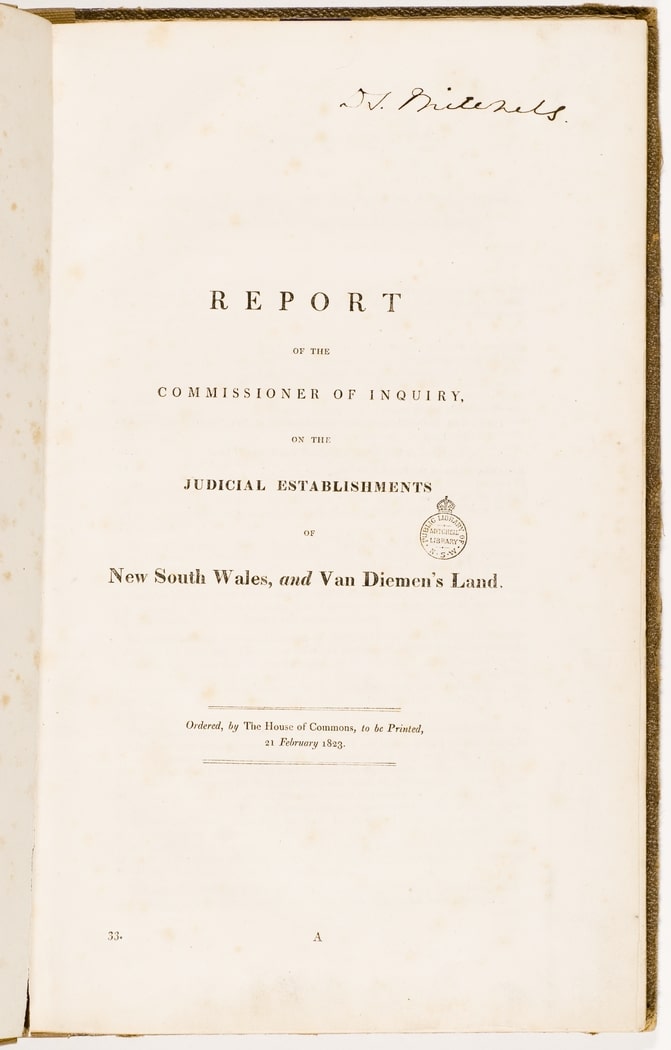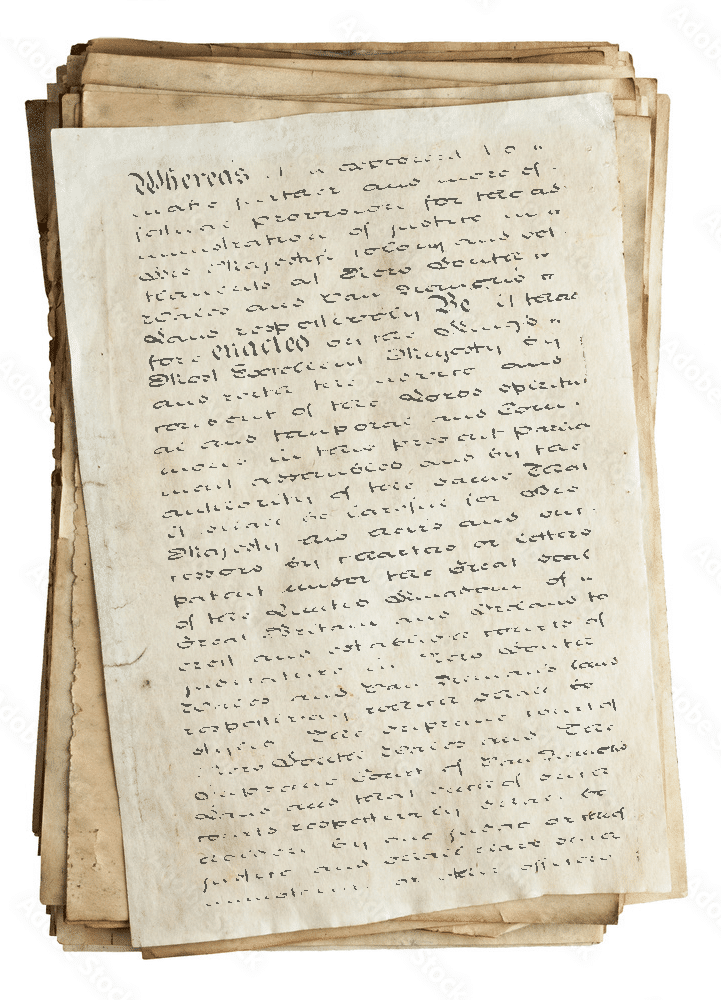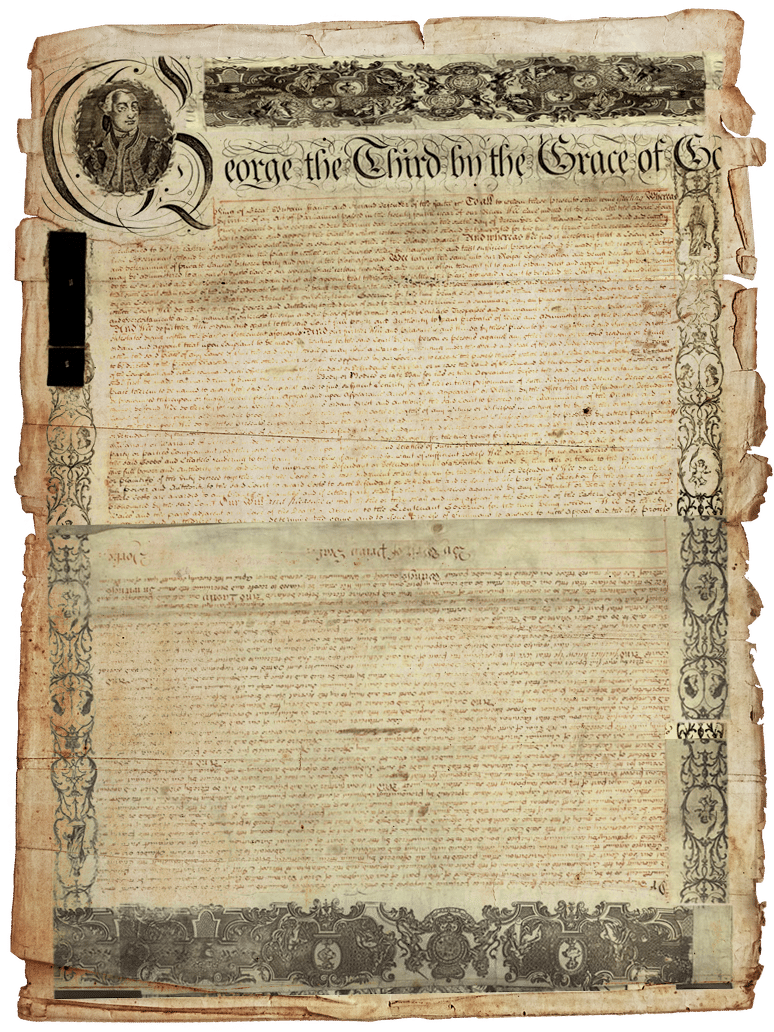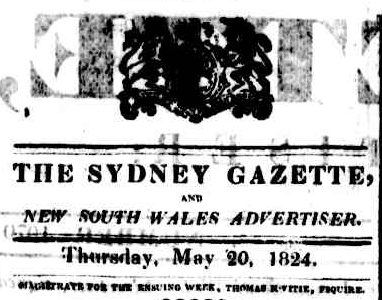Source Documents
Developing an understanding of the establishment of the NSW Supreme Court in 1824
Source Documents and the NSW Supreme Court
Many original source documents can be accessed to illustrate the history of the establishment of the NSW Supreme Court. Starting with the Bigge Reports that recommended changes to the administration of Justice, the introduction of the 1823 NSW Act and the Letters Patent which legislate these recommendations, we have an accurate idea of how the justice system of Australia developed in its earliest stages.
But the formal documents only tell us part of the story. Newspaper articles and letters from the time reveal the extent of the battle between Governor Darling, a military man who believed in maintaining order through strict rules and punishment, and the new Chief Justice who believed ‘the judicial office itself stands uncontrolled and independent, and bowing to no power but the supremacy of the law.’
Below we have collated many of the key documents and provided links to other sites that hold these valuable historical records.
Earl Bathurst shows concerns as Secretary of State for the Colonies
1817
Earl Bathurst was a politician responsible for the administration of the British Colonies (including NSW) from 1812-1827. He wrote a letter dated ‘Downing Street, 23rd April, in 1817’ to Lord Sidmouth stating:
“Transportation to New South Wales is becoming neither an object of Apprehension here nor the means of Reformation in the Settlement itself, and that the Settlement must be either placed upon a footing that shall render it possible to enforce, with respect to all the Convicts, strict Discipline, Regular Labour, and constant Superintendance, or the System of unlimited Transportation to New South Wales must be abandoned.”
Bathurst commissioned an inquiry into the administration of the NSW colony.
The Bigge Reports
June 1822 (1st), February 1823 (2nd) & March 1823 (3rd)
Commissioner John Thomas Bigge was sent to the colony to report on ‘the state of the settlements in NSW and its dependencies, and the laws, regulations and usages, civil, military and ecclesiastical.’ His instructions were to make recommendations in light of the assumption that the settlement that was a place of punishment and reformation and a ‘receptacle for offenders’ where transportation should invoke ‘real terror.’
The 2nd Bigge Report, ‘The Judicial Establishments of NSW and Van Diemen’s Land’ and Bigge’s private appendices to Bathurst formed the basis of The NSW Act as drafted by Francis Forbes.
The NSW Act 1823 (UK)
19 July 1823 (4 Geo. IV Act No .96)
The substance of the NSW Act was based upon recommendations in the Bigge Report for the “better Administration of Justice” in the colony and was passed by the British Parliament in 1823.
In addition to a nominated Legislative Council, the Act established the Supreme Court of New South Wales and gave the Chief Justice the power to veto any proposed legislation if it was not consistent with English law (so far as the circumstances permitted).
Furthermore, the NSW Act gave the Supreme Court a powerful supervisory jurisdiction over magistrates in the inferior courts.
Third Charter of Justice
13 October 1823
Otherwise known as Letters Patent. Letters patent are issued by a monarch granting an office or creation of an office.
This letter was issued by the King of England, George IV and is authorised by Statute, being the NSW Act, which it describes as an Act ‘for the better administration of Justice in New South Wales and Van Diemens Land and for the more effectual Government thereof.’ The Letters established the NSW Supreme Court and allowed for the appointment of Judges and Chief Justices to the Courts and the conditions of their employment.
Together with the NSW Act, the Charter forms the legal basis for the establishment of the Supreme Court.
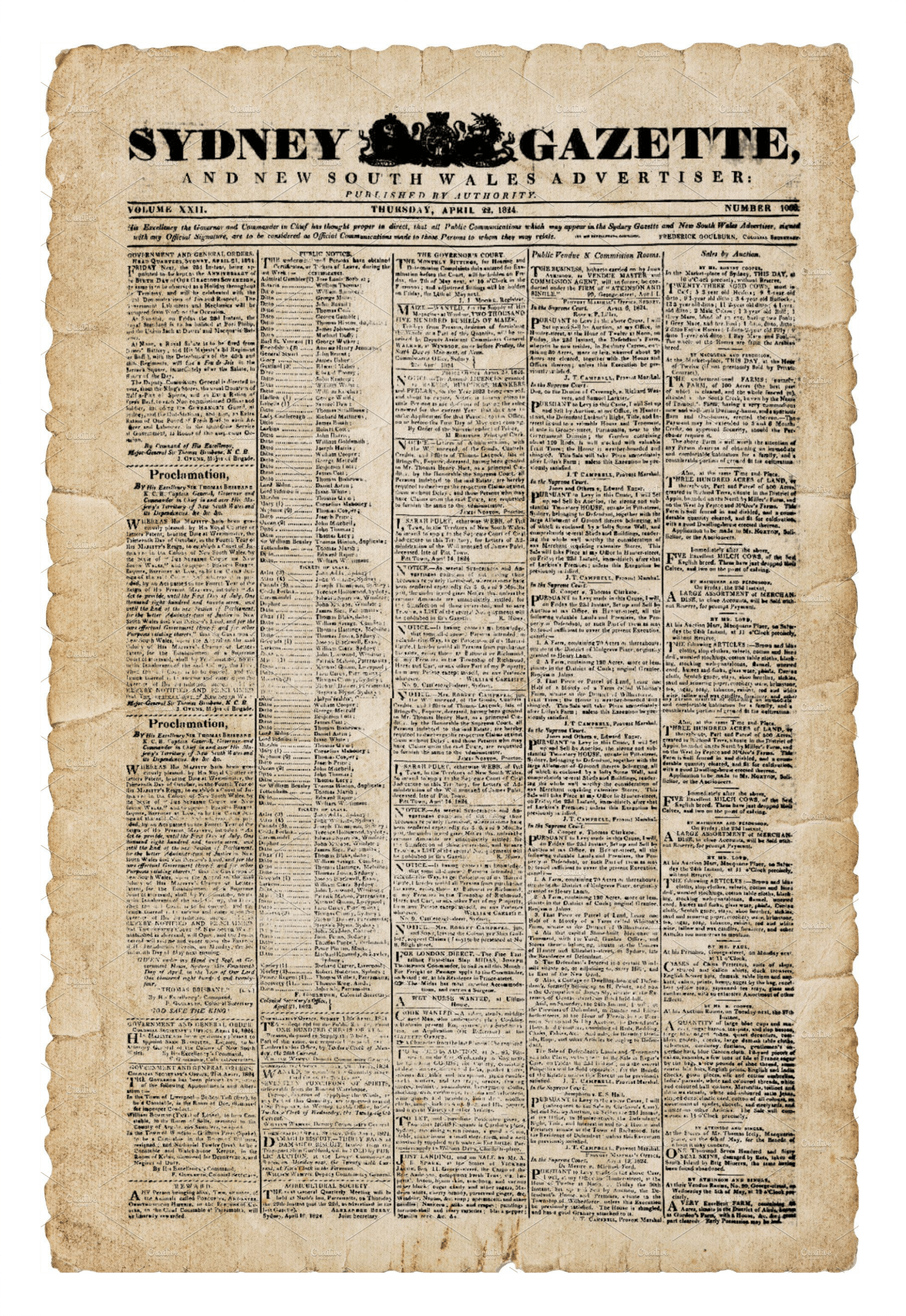
The Sydney Gazette
April 1824
The Sydney Gazette contained a proclamation from Governor Brisbane that the Supreme Court was to be established on Monday 17th May 1824, with Francis Forbes as the new Chief Justice.
“His Majesty hath been graciously pleased… to establish a Court of Judicature in the Colony… and to appoint FRANCIS FORBES, Esquire, Barrister at Law, to be the CHIEF JUSTICE of the said Court.”
Proclamation Establishing the Supreme Court
17 May 1824
Pursuant to section 18 of the NSW Act 1823, upon the arrival of the Letters Patent to the colony, the Governor ‘shall by proclamation notify to the inhabitants of the said colony the time when the said courts respectively are to be opened.’
The Sydney Gazette on 20 May 1824 stated ‘The formal promulgation of His Majesty’s New Charter of Justice, took place at noon, on Monday last… At two o’clock .. this court opened.. At three, the Charter was proclaimed in the Market-place. .. His Excellency the Governor entertained his Honor the Chief Justice.. at dinner- in honour of a day that will long be remembered by the grateful inhabitants of Australia’
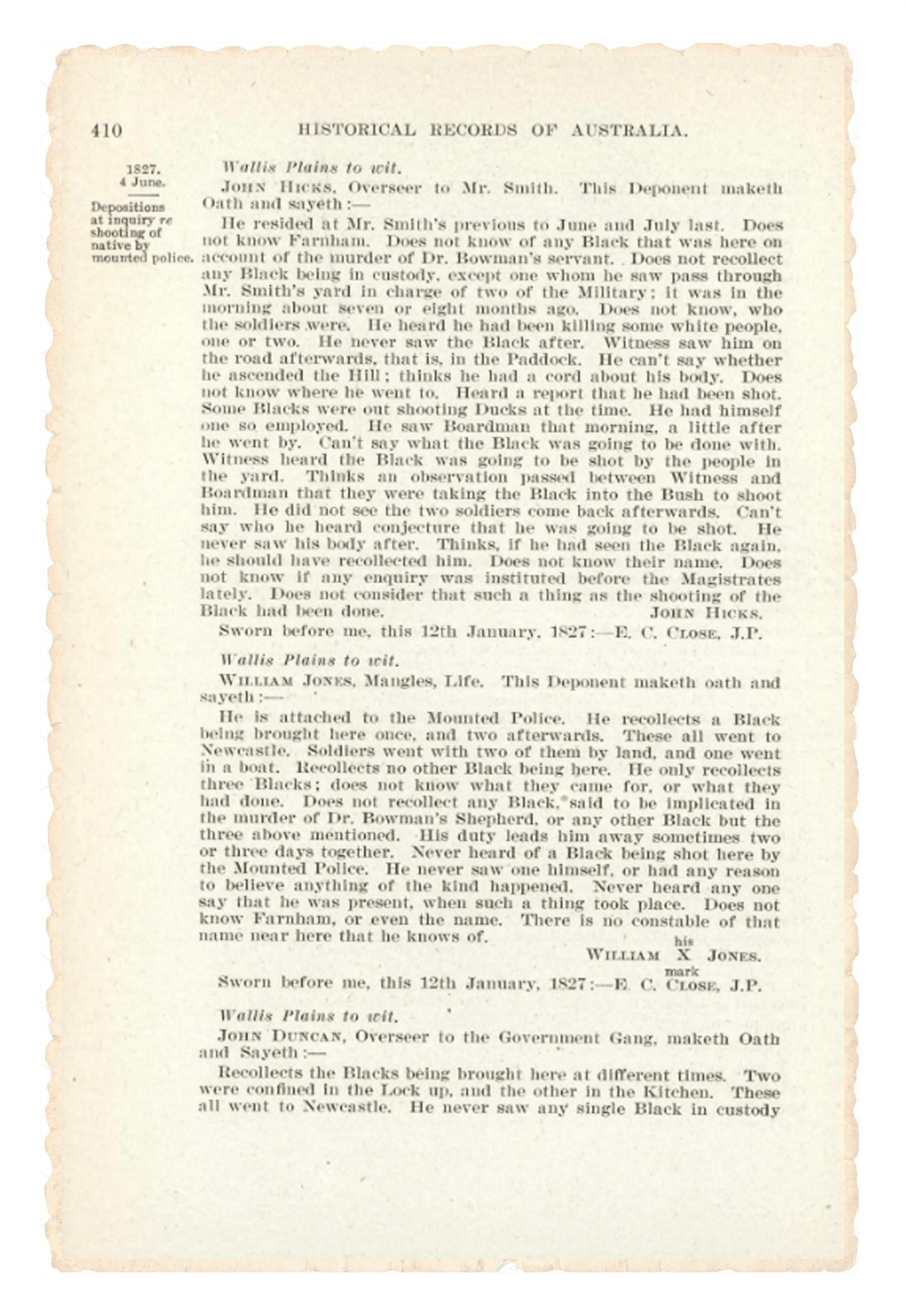
Letters between Forbes and Horton
september 1827
Letters between Chief Justice Forbes and Under-Secretary Wilmot Horton detail the initial period of Governor Darling’s governance and his gradual decline in the public’s confidence. The letters also discuss Forbes’ suspicion that Darling saw the courts as an threat to his power. In the letter Forbes writes, ‘The powers of the government have been at once legislative, judicial and executive; your act abridged all these powers, and created the Supreme Court, a check, indeed a controlling authority.” Further he wrote, ‘the people of this country… naturally regard the Supreme Court as their only protection against absolute power”.
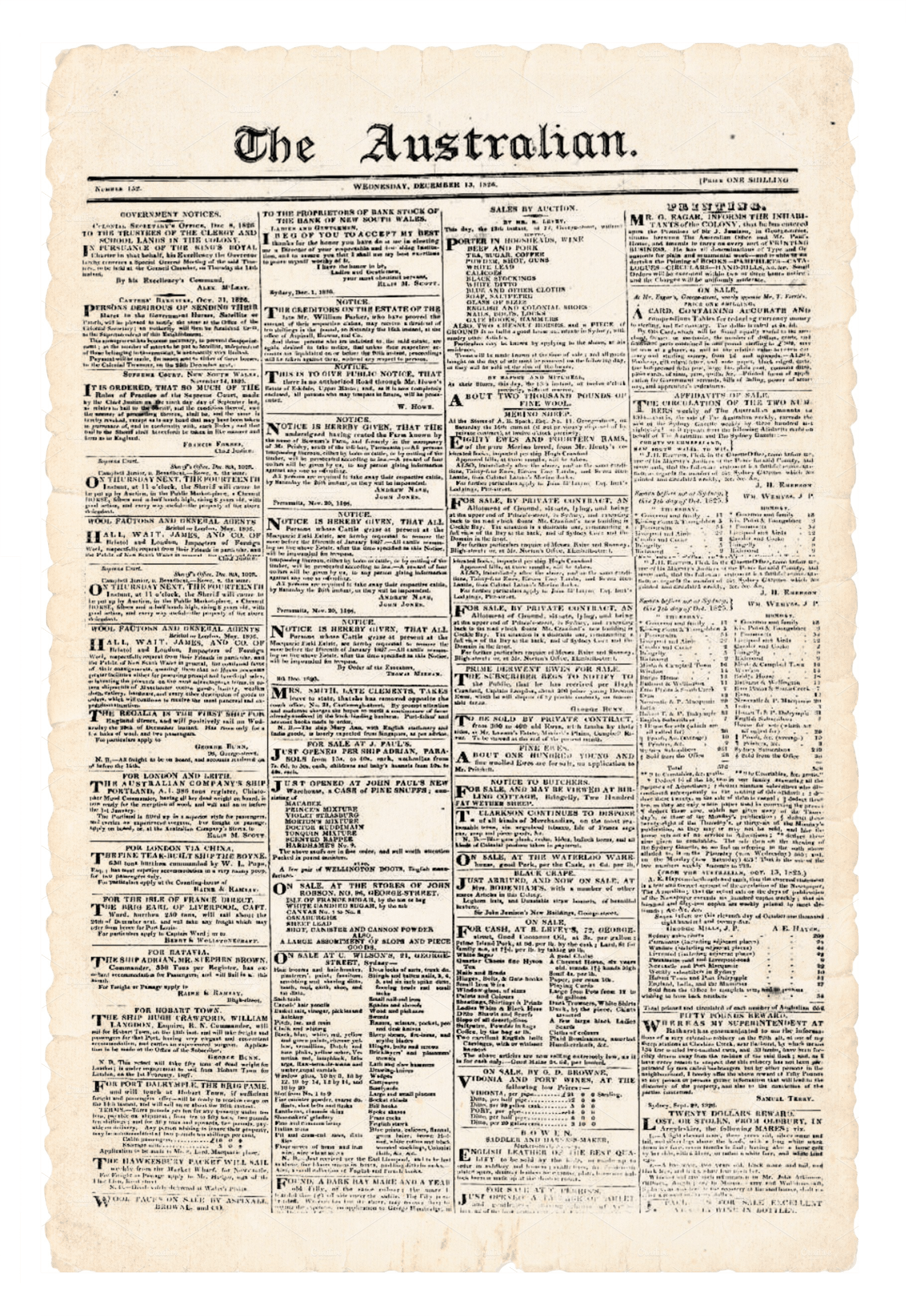
The Australian Newspaper (1826)
December 1826
This issue of The Australian illustrates the public outrage in response to the death of a soldier, Thomas Sudds, as a result of what was deemed one of the most controversial instances of punishment under the law at the time.

The Australian Newspaper (1827)
May 1827
This article of The Australian was written in response to a new tax proposed by Governor Darling, which ordered a tax of four pence on each newspaper bought. Many accused the Governor of trying to silence the newspapers due to his declining popularity.
“Imposing a duty of four-pence on Newspapers, is and must be repugnant to the laws of England.”
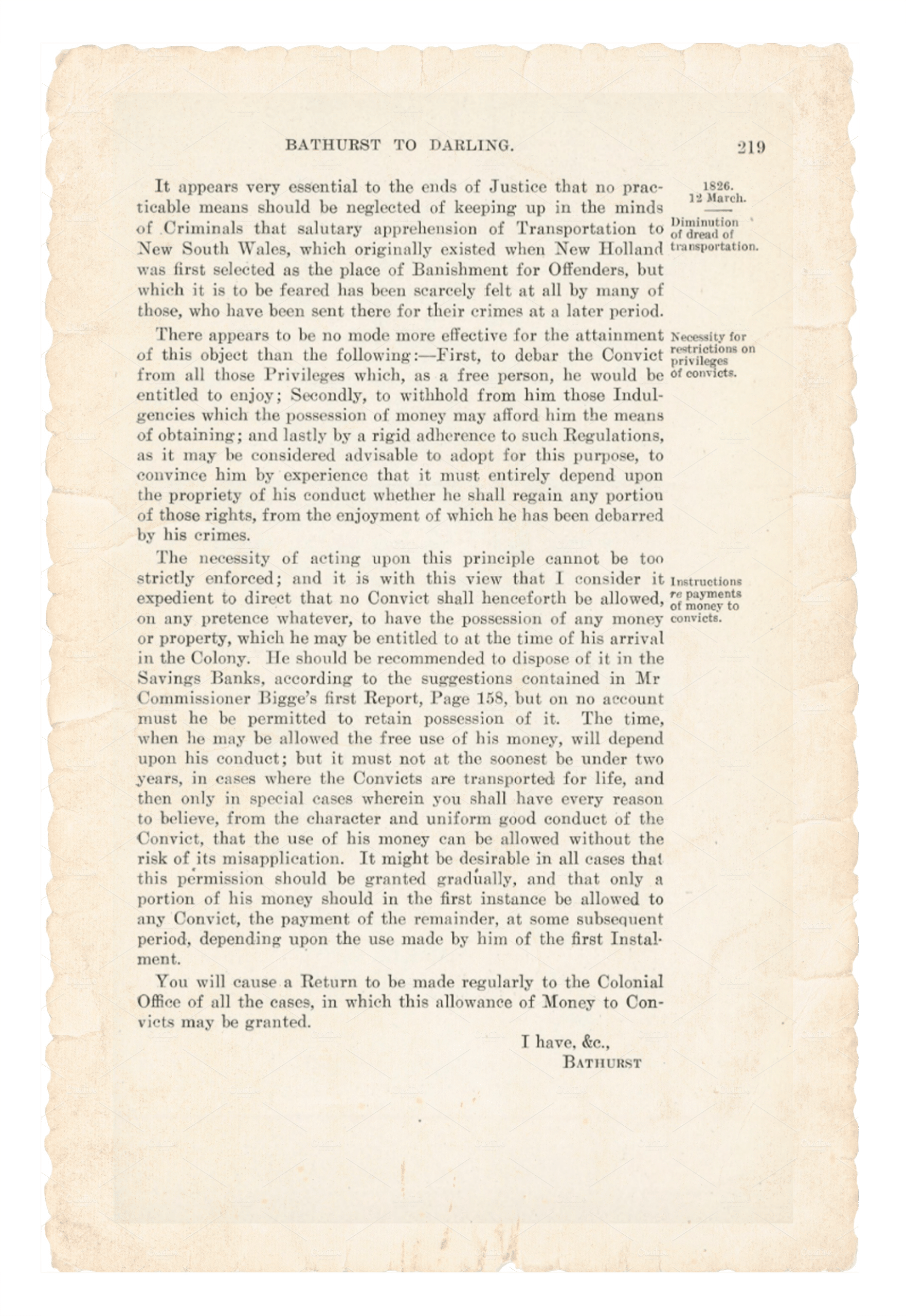
Letters From Bathurst to Darling
MARCH 1826
These letters from Lord Bathurst to Governor Darling detail the instructions given to Darling, and the outcomes he was to achieve. In particular, Darling was to make the colonies a place “to be feared” and to restrict many of the rights that the convicts had at the time.

